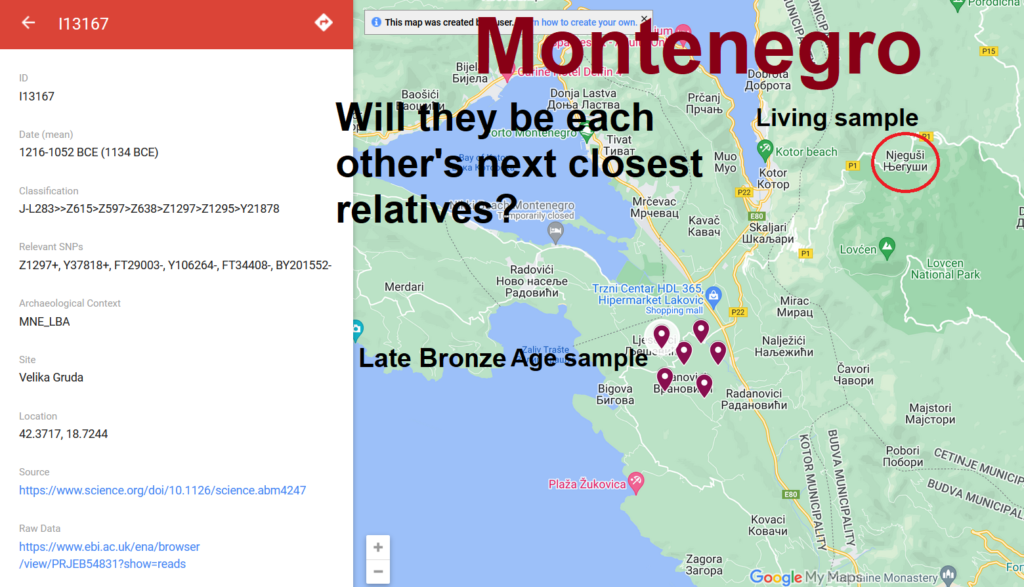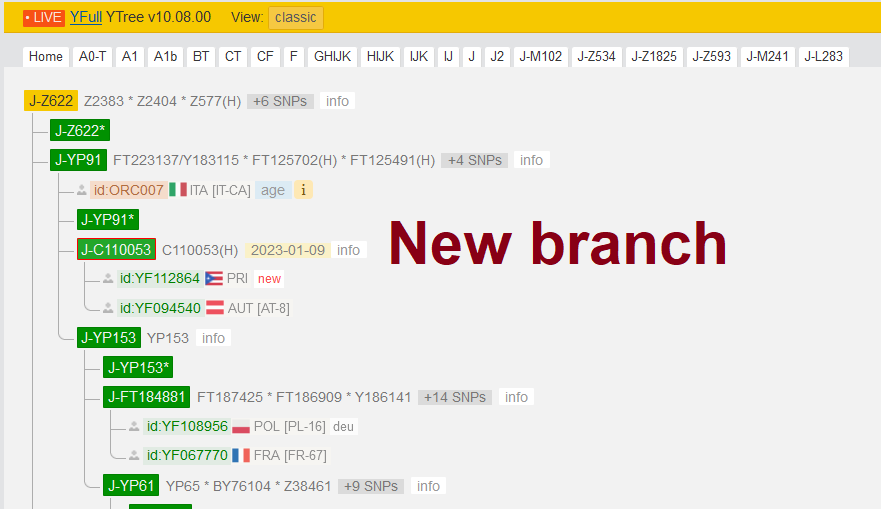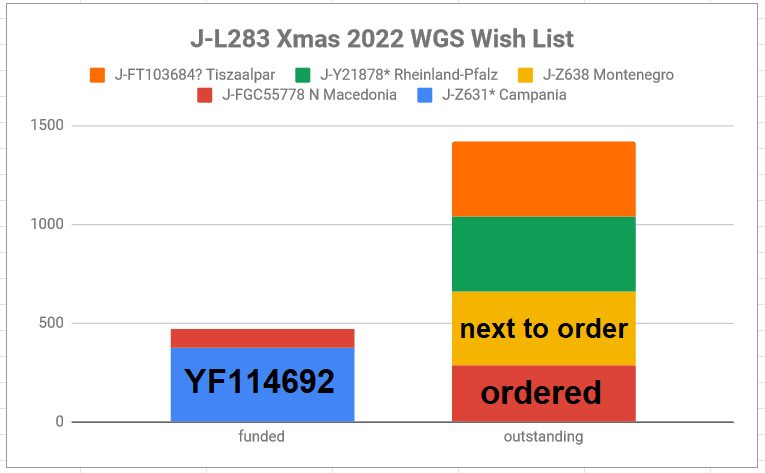I will begin with the most interesting latest development.
The J2b-Z631* man tracing his descent to Roberto from Caserta, Campania, Italy's WGS result came in.
He was found (first observed by Flor Veseli) to be more closely related to the ancient Roman sample R116 buried in the Via Salaria necropolis sometime between 1-200 CE than to any other living man yet tested.
For background, here's my original post in 2019 about the sample from Via Salaria necropolis:
https://phylogeographer.com/first-ancient-j-z631-found-in-the-via-salaria-necropolis-in-rome/
They share at least one SNP, Y423942. Maybe it will be only one.
So the name of their new branch may end up being J-Y423942 on the YFull tree. This is a new SNP and was first discovered as a result of this WGS test I ordered at YSEQ. This shows that YSEQ's lowest tier WGS test, at $359, gives high enough coverage to significantly advance our male line origins research.
This development, on its face, means that we can assume that their most recent common male line ancestor had already been living in Italy before 1-200 CE, perhaps somewhere between Caserta and Rome (but not necessarily).
I'll write a separate article about this soon, after a bit more information is known.
Eventually the new branch should be visible here - https://www.yfull.com/live/tree/J-Z631/
This is the first result from the set of five men I have planned to upgrade to WGS. With this result, I feel like we are off to a good start!
Two additional samples were recently received at the YSEQ laboratory in Berlin.
One is the man from Njeguši, Montenegro who I had already prioritized to upgrade to WGS as part of the Xmas fundraising drive.
He turned out positive for Z638, so he is somewhere below the J2b-Z638 branch.
Today I have ordered the SNP Y21878 for him. This SNP defines a major child lineage of J2b-Z638 (several steps down the tree) that has been found in ancient Late Bronze Age sample I13167 from Velika Gruda.
 The interesting question here is whether or not this man from Njeguši is more closely related to the nearby ancient sample or not.
The interesting question here is whether or not this man from Njeguši is more closely related to the nearby ancient sample or not.
The other sample recently received at YSEQ is from a man tracing his descent to an ancestor with surname Valentino from Corio, a commune of Turin in the Piedmont region of northwestern Italy.
We know from his Geno test result from National Geographic that he is positive for Z1297.
The first SNP I tested him for was Y21878 but he turned out negative. Today I've ordered Y23094, which defines one of the major lineages of J2b-Z1297.
He is missing the common allele defining J2b-Y23094, DYS607 14 -> 13, but he may still end up being of this line.
There is a new branch below J2b-YP91, the much rarer child of J2b-Z622.

A Nebula WGS tester has formed the subclade J2b-C110053 with the sample tracing descent to Oberallgäu (near Austria) with surname Reesman whom I had WGS tested at YSEQ.
https://www.yfull.com/live/tree/J-YP91/
The new sample traces his male line origin to Puerto Rico. If he provides me access to his STRs I will be able to check if there is any STR signature that might define their rare line J2b-C110053.
However given that their line is defined by a single SNP, it is not likely that many stable STR alleles will have accumulated during their short bottleneck. So there is not a good chance that their most recent common ancestor will have a traceable STR signature.
New split in a branch of prolific J2b-Z1043 that might be indicative of continuity in the Balkans since the Iron Age.
https://www.yfull.com/tree/J-FGC53803/
This new sample traces his descent to an ethnic German who lived in what is now Vojvodina, Serbia. His next closest relatives are the Field clan of the US who trace back to England.

There is the intriguing possibility here that his ethnic German ancestor's deeper male line ancestry never actually came from further north, but he may be a remnant of the assumed Balkan homeland of J2b-Z1043 whose ancestors "decided to stick around".
It will require more closely related matches to be found in order to know one way or the other.
I consider the Dardani tribe (centered around Kosovo) and/or their inland neighbors, to be good candidates for the potential geographic origin of the very prolific, Iron Age J2b-Z1043.
I'll end with an update on the J2b-L283 Christmas 2022 WGS Upgrade Wish List fundraiser.
Out of the five candidates, I've already ordered tests for two men, with the aforementioned J2b-Z631 from Caserta being the first result received.

While I have ordered tests for 40% of the men, I have only raised money to cover 24.9% of the costs so far.
Now that we have the sample and preliminary SNP results for the man from Njeguši, Montenegro, I am ready to order the WGS test for him as soon as we get some more funding.
If you would like to help us advance the research into our male line origins, specifically regarding this man from Montenegro who I plan to upgrade next, please consider donating to me via paypal using this link with the note "J2b-L283 WGS fund".
I also accept Zelle to my email hunterprovyn at gmail dot com. My first name is Frank in case there is confusion regarding the account details you will see.
I also accept paper checks, please email me for the physical address in Nevada.
Looking forward to seeing the Montenegrin man’s results as I appear to be the only person with Montenegrin paternal ancestry in this haplogroup so far.
Hi Stefan, please remind me of your result if you have already done a higher resolution type of test to determine your specific lineage of J2b-L283.